

EXPLORE BY TOPIC:
  Our top 10 resources
Our top 10 resources
  Childhood / Early Life
Childhood / Early Life
  Chronic Stress
Chronic Stress
  Education
Education
  Food Security
Food Security
  Genetics
Genetics
  Jobs & Work
Jobs & Work
  Housing / Neighborhoods
Housing / Neighborhoods
  Income & Wealth
Income & Wealth
  Race / Racism
Race / Racism
  Social Inclusion
Social Inclusion
  Policy & Change
Policy & Change





Buy the DVD
e-Newsletter
FAQs
Contact Us
Site Map
Home

|
 |


|
Background: Social inclusion concerns people's basic needs as well as their ability to participate fully in society. In some ways, it encompasses all of the societal and economic conditions - and inequities - that underlie our health: our neighborhood, income, job, opportunities, support network, and other resources. But it also includes a political dimension because it relates to people's involvement in decision-making processes and their access to power and institutions.
The opposite of social inclusion is social exclusion, which can result from racism, discrimination, stigmatization and hostility as well as structural disparities and neglect. When individuals are made to feel less valued or have no control over their work and living conditions, they not only experience increased stress and anxiety but they feel disempowered, contributing to riskier behaviors and abuse, job and income instability, domestic strife, and isolation. Those consequences can in turn lead to higher social costs in terms of health care, welfare, crime, and lost productivity.
Social exclusion is tied to material conditions as well. When people are denied jobs or home loans; when they don't have access to decent, affordable housing, a good education, or reliable transportation; when their income is insufficient; when they lack opportunities to engage in civic life and can't gain access to other resources vital to their prosperity - all of these increase their likelihood of disease and premature death. For especially vulnerable populations like children, the effects can have a life-long impact even after their conditions improve - what experts like Dr. Jack Shonkoff have termed the "pile up" of risk or disadvantage.
Unlike absolute indicators, social inclusion or exclusion is measured in terms of relative advantage or deprivation within a society. Context matters - after all, the difference between living well or poorly on $1,200 per month depends on the society in which you live. Obviously hunger and homelessness exist even in wealthy nations like the U.S., but relative poverty, for example, gives us a broader picture of basic necessities, including: the ability to fix or replace something that breaks; money for school trips, convenience items and special occasions; good credit; insurance and protections in case of emergency; and collateral for home, car and educational loans.
Relative poverty has a powerful effect on health: People with higher incomes not only live longer, they are healthier. Children in poor families are seven times as likely to be in poor or fair health as children in the highest-income families, and lower-income adults are more likely to smoke, be obese, have diabetes and have heart disease.
Another important component of social inclusion is social support. Today, one in four Americans say they have no one to talk with about important matters - a number that has tripled in the last 20 years. The problem is not individual, it's structural. We work more hours annually than almost every country in the world, even Japan, and we spend on average 50 minutes a day commuting. It's no wonder that many of us are not spending enough time with our families, have cut back on volunteering and outside activities, and feel alone. Isolation is deadly, as researcher Lisa Berkman has shown, increasing the risk of nearly every cause of death.
Strengthening family ties and personal connections is certainly important to improve health. But that's only one piece of the puzzle, because the societal factors that most influence inclusion or exclusion are beyond an individual's control. Investing in our neighborhoods and schools; providing secure jobs with career ladders, good benefits and adequate income; improving work conditions; enforcing civil rights laws; supporting families and children; and above all, creating a society that works for everyone - these are the ingredients for a more inclusive, healthier nation.

|
|
|
| |
|
Social Inclusion: 0 items found |
 Inequality: Bad for Your Health Inequality: Bad for Your Health 
INTERVIEW with Ichiro Kawachi, Dollars & Sense, January 2008 Epidemiologist Ichiro Kawachi clearly explains the theory about how relative deprivation from economic inequality, and explores various possible mechanisms for the relationship. |
 |
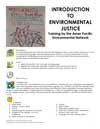 Introduction to Environmental Justice Introduction to Environmental Justice 
TRAINING CURRICULUM from the Asian Pacific Environmental Network (APEN) APEN has nearly 15 years of experience working with low-income Asian immigrant and refugee populations from the Laotian and Chinese in Oakland and Richmond, California, including elders, youth and women. Our organizing and advocacy manual documents APEN's leadership methodologies so that others may use it to organize their communities. This initial curriculum book focuses on healthy homes education tools tailored for API community-based organizations and their leadership. |
 |
 Is living in the United States bad for our health? Is living in the United States bad for our health? 
NEWS ARTICLE by Paul Gullixson Santa Rosa Press Democrat, October 2009
With Americans commuting longer, working longer and often living with fewer people or by themselves, social isolation is on the rise. As hard as it may be to believe, one in four Americans now say there is no one in their lives with whom they can discuss important matters. This isolation, combined with stress, takes a toll on health. People who are socially isolated are at greater risk for infections diseases, diabetes, stroke, and cardiovascular disease. In order to improve health communities must look beyond health care toward what is breaking down in the community: social support, friendship networks, family ties. |
 |
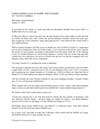 Latina mothers poor in wealth, rich in health (pdf) Latina mothers poor in wealth, rich in health (pdf) 
NEWS ARTICLE by Yvette Cabrera, Milwaukee Journal Sentinel, August 11, 2002 National health records show that Latina women have significantly lower rates of premature and underweight births compared to Americans from other racial/ethnic groups - even than individuals wealthier than them. Cabrera looks at the story of this "Latino epidemiological paradox," and the hypothesis that Latino culture plays a major role in the health advantage. |
 |
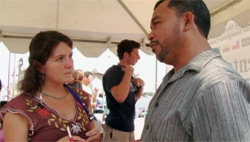 Latino Paradox Latino Paradox 
VIDEO EXCERPT, Unnatural Causes - Episode 3 Two researchers present findings related to the "Latino paradox," the fact that new Latino immigrants, despite having on average lower incomes and highly stressful lives, suffer lower rates of chronic and mental illness than the average native-born American. |
 |
 Library of Resources on Social Determinants of Health Library of Resources on Social Determinants of Health 
WEB SITE created and maintained by Dennis Raphael A great collection of resources on the issues surrounding SDOH, health equity, and the politics of creating real change in the social factors that most affect health outcomes.
See especially Raphael's "Public policies and the problematic USA population health profile," and "The Politics of Population Health: Why the Welfare State is the Key Social Determinant of Health."
|
 |
 Living at an Epicenter of Diabetes, Defiance and Despair Living at an Epicenter of Diabetes, Defiance and Despair 
NEWS ARTICLE in the New York Times, January 1, 2006 The second in a series of in-depth articles about New Yorkers living with diabetes, this article describes the epidemic of diabetes in low-income neighborhoods like East Harlem.
|
 |
 Me, My Race, and I Me, My Race, and I 
Maybe it affects your every move. Maybe you never notice it.
Walk a mile in someone else’s shoes by watching and listening to four slideshows. You may be surprised to learn how great a role race plays in your own life.
|
 |
 Mental health hits home: Is America driving you crazy and then killing you? Mental health hits home: Is America driving you crazy and then killing you? 
ESSAY by Stephen Bezruchka University of Washington professor and emergency room doctor Bezruchka considers how social and economic factors contribute to astronomical rates of mental illness in the U.S., particularly among children. |
 |
 Minority Health Resources Action Kit for Community Leaders Minority Health Resources Action Kit for Community Leaders 
TOOLKIT by the Minority Health Initiatives Department at Families USA The purpose of this Action Kit is to provide community leaders with the information, tools, and resources necessary to engage in health advocacy and improve the health and well-being of their communities. Sections of the toolkit place emphasis on the importance of public programs in reducing racial and ethnic health disparities. |
 |
 Nancy Krieger Interview (mp3) Nancy Krieger Interview (mp3) 
PODCAST, Web-exclusive content from UNNATURAL CAUSES In this audio podcast, excerpted from an interview conducted for UNNATURAL CAUSES, Nancy Krieger of the Harvard School of Public Health talks about the political economy of health, how racial and place-based inequities impact health, and how public health and social justice are inextricably intertwined.
ENHANCED PODCAST (m4a)
|
 |
 Nancy Krieger Interview (pdf) Nancy Krieger Interview (pdf) 
EDITED INTERVIEW TRANSCRIPT, Web-exclusive content from UNNATURAL CAUSES In this original interview conducted for UNNATURAL CAUSES, Professor Nancy Krieger of the Harvard School of Public Health discusses the social gradient, the political economy of health, and the role of public health in struggles for social justice. |
 |
 Opportunity Agenda Opportunity Agenda 
WEB SITE The Opportunity Agenda works across social justice issues to build public support for greater opportunity in America. With a growing community of partners that spans diverse issues and constituencies—human rights, racial equality, immigration, health care, labor rights, education, criminal justice, and others—they work to move hearts and minds as well as public policy and political discourse. Over time, their activities hope to achieve: (1) measurably better media coverage that shifts the public debate; (2) visibly improved public support for social justice values and policies; and (3) greater capacity within social justice organizations and movements to communicate our shared values and vision for America. |
 |
 Opportunity Mapping Opportunity Mapping 
RESEARCH TOOL from the Kirwan Institute Opportunity mapping is a research tool used to understand the dynamics of “opportunity” within metropolitan areas. The purpose of opportunity mapping is to illustrate where opportunity rich communities exist (and assess who has access to these communities) and to understand what needs to be remedied in opportunity poor communities. Opportunity mapping builds upon the rich history of using neighborhood based information and mapping to understand the challenges impacting our neighborhoods. Currently, the site explains the concept behind opportunity mapping and provides examples. They will soon launch a blog and resource Web site for individuals and organizations using neighborhood based information systems. |
 |
 Policy Guide (pdf) Policy Guide (pdf) 
UNNATURAL CAUSES This guide contains a menu of policy ideas that can improve health equity. Generally, such policies aim to: tackle inequality and improving living standards, protect those at the bottom of the pyramid, and reform decision-making processes. |
 |
 PolicyLink PolicyLink 
WEB SITE PolicyLink is a national research and action institute advancing economic and social equity by "Lifting Up What Works." By developing and implementing multifaceted strategies, PolicyLink seeks to ensure that everyone—including low-income communities of color—can contribute to and benefit from local and regional growth and development. |
 |
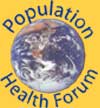 Population Health Forum Population Health Forum 
University of Washington, School of Public Health & Community Medicine The Population Health Forum is a group of academics, citizens, students, and activists across several nations who work to build support for changing the rules of society so that better health comes naturally. Their website includes a library of great articles and resources to learn more and use in public education, and lists steps you can take towards closing the enormous wealth gap in the United States. |
 |
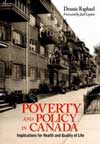 Poverty and Policy in Canada: Implications for Health and Quality of Life Poverty and Policy in Canada: Implications for Health and Quality of Life 
BOOK by Dennis Raphael Poverty and Policy in Canada provides a unique, interdisciplinary perspective on poverty and its importance to health and quality of life. This original volume considers a range of issues that will be of great interest to a variety of audiences —Social Work, Health Sciences, Sociology, Political Science, Policy Studies, Nursing, Education, Psychology, and the general public. This new book has three, straight-forward goals:
• to provide a range of approaches for understanding poverty and its effects
• to help readers understand the structural antecedents of poverty – that is, how society and its distribution of resources are the primary determinants of poverty
• to provide realistic solutions to poverty |
 |
 Prevention Institute Prevention Institute 
WEB SITE Prevention Institute is a non-profit national center dedicated to improving community health and well-being by building momentum for effective primary prevention. Primary prevention means taking action to build resilience and to prevent problems before they occur. The Institute's work is characterized by a strong commitment to community participation and promotion of equitable health outcomes among all social and economic groups. Since its founding in 1997, the organization has focused on injury and violence prevention, traffic safety, health disparities, nutrition and physical activity, and youth development. |
 |
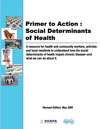 Primer to Action: Social Determinants of Health Primer to Action: Social Determinants of Health 
REPORT by the Ontario Prevention Clearinghouse, 2007 This resource is for health professionals, lay workers, volunteers and activists. It’s for you and your organization, but also for your family, and your community. We will focus on six key determinants of health: income, education, employment, housing, food, and inclusion. The Primer to Action will show you:
1) where you can find more information about each of six determinants;
2) how you can work on the determinants in your agency;
3) who you can learn from, with examples and models; and
4) what you can do in your community. |
 |
 Priority Public Health Conditions Knowledge Network Priority Public Health Conditions Knowledge Network 
WEB SITE by the WHO Commission on the Social Determinants of Health This Network was established to identify barriers and facilitators of access to health care. It aims to introduce pro-equity interventions within health programmes, particularly in low and middle income countries. |
 |
 Promoting Health Equity: A Resource to Help Communities Address Social Determinants of Health (pdf) Promoting Health Equity: A Resource to Help Communities Address Social Determinants of Health (pdf) 
WORKBOOK - Centers for Disease Control and Prevention, 2008 This workbook is for community-based organizations seeking to affect the social determinants of health through community-based participatory approaches and nontraditional partnerships. Along with an introduction to the concepts of health equity, the workbook presents case studies of communities working at both small and large scales. The authors then provide guidelines for developing your own initiative, from creating partnerships to identifying your approach to assessing and maintaining your progress. |
 |
 Proximal, Distal, and the Politics of Causation: What's Level Got to Do with It? Proximal, Distal, and the Politics of Causation: What's Level Got to Do with It? 
SCHOLARLY ARTICLE by Dr. Nancy Krieger, American Journal of Public Health, Feb 2008 Causal thinking in public health, and especially in the growing literature on social determinants of health, routinely employs the terminology of proximal (or downstream) and distal (or upstream). In this piece, Krieger argues that the use of these terms is problematic and adversely affects public health research, practice, and causal accountability. At issue are distortions created by conflating measures of space, time, level, and causal strength.
The article draws on an ecosocial perspective to show how public health got caught in the middle of the problematic proximal–distal divide and proposes replacing the terms with explicit language about levels, pathways, and power.
|
 |
 Racial and Ethnic Disparities in Women's Health Status (pdf) Racial and Ethnic Disparities in Women's Health Status (pdf) 
PRESENTATION TRANSCRIPT, Carol J. Rowland Hogue, PhD, MPH, Maternal and Child Health Leadership Conference, April 2003 Hogue eloquently describes the prevalence and effects of racism and poverty on a wide variety of health issues, and makes a case for better social supports. This links to a pdf of the transcript. The talk is also available on the conference website in HTML, along with an audio recording, and Hogue's slides. |
 |
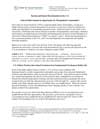 Racism and Racial Discrimination in the U.S. (PDF) Racism and Racial Discrimination in the U.S. (PDF) 
REPORT from the Center for Social Inclusion, June 2008 To support the U.S. 2008 visit of the UN Special Rapporteur on Contemporary Forms of Racism, Racial Discrimination, Xenophobia and Related Intolerance, CSI provided an analysis of the ways in which U.S. policies perpetuate racialized poverty and fail to meet our international obligations to end racial discrimination. CSI examined public policy in light of our treaty obligations under the International Convention on the Elimination of All Forms of Racial Discrimination (CERD), which commits the United States to take concrete steps to combat racism, and to submit regular progress reports on its efforts.
Highlighting the connections between human rights and the structural racism approach, the report tries to illuminate how "federal policy impacting housing, education and transportation have the effect of exacerbating concentrated poverty in communities of color, and ensuring that racial discrimination is perpetuated, rather than eliminated." |
 |
| « Prev 1 | 2 | 3 | 4 | 5 Next » |
|




